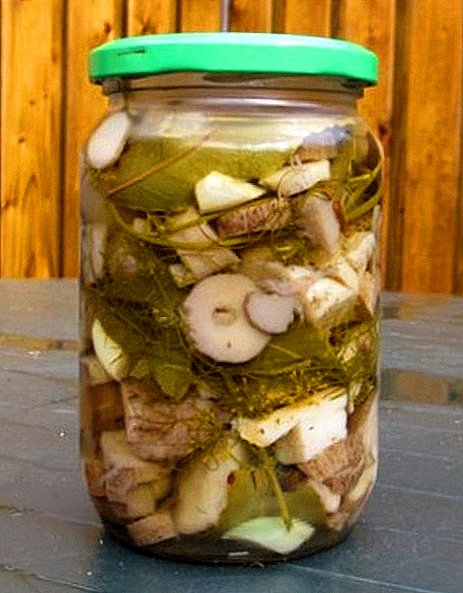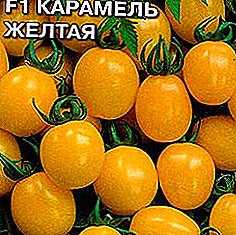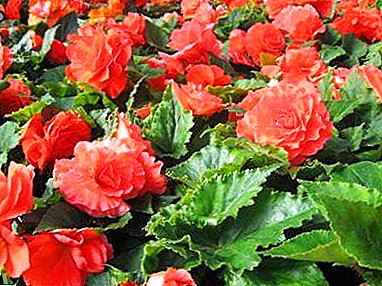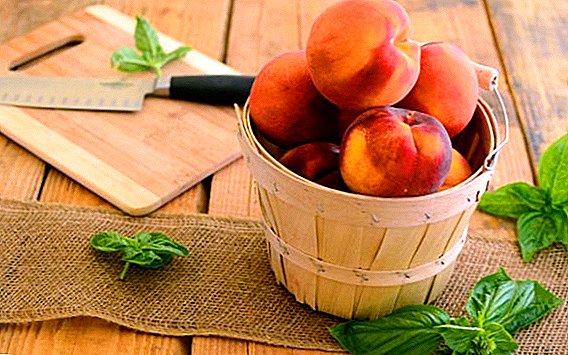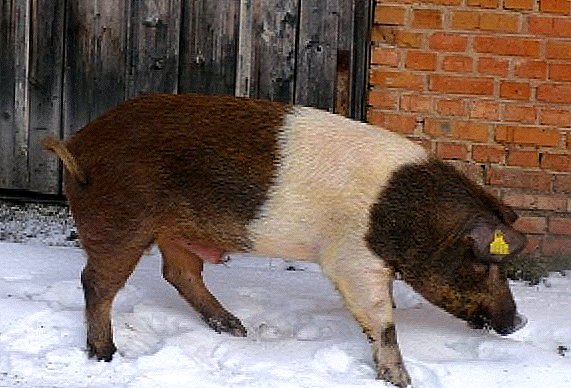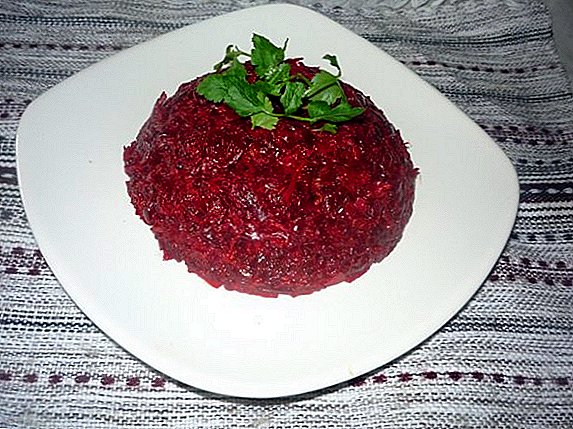
Tomatoes - one of the favorite plants of many summer residents, and the main task of each of them is to obtain a rich harvest.
All gardeners have their own ways and methods by which this goal is achieved, some fertilize tomatoes with the help of organic matter, while others use mineral supplements.
This article will help to understand the variety of nutrients that supply the soil before planting seedlings with all the vitamins and microelements and contribute to obtaining a bountiful harvest.
Preliminary work
Despite the fact that the planting of tomatoes produced in the spring, but the preparatory work should begin in the fall. Preliminary work takes place in several stages.
Choosing a place to bed
Well-lit and warm areas are chosen for planting tomatoes, where groundwater does not run close to the ground. Two years in a row tomatoes can not be planted in the same place, as it contributes to the depletion of the soil and increase its acidity. It is better if the seedlings or seeds are planted on the place where they grew in last season:
- bow;
- garlic;
- carrot;
- cucumbers;
- cabbage;
- zucchini;
- beet;
- pumpkin.
Attention! It is categorically impossible to plant tomatoes on the field after potatoes and other nightshade, since all these crops are attacked by the Colorado potato beetle and are affected by blight.
Land preparation
In the fall, after harvesting, the land should be plowed up or digged by hand to a depth of 22 - 25 cm. In spring, before planting the crop, the land is processed a second time: digging with a shovel or forks. The soil prepared in this way is saturated with oxygen, made loose and soft; when digging, you can extract and destroy the roots of all weeds.
Preparation of planting material
Tomato seedling
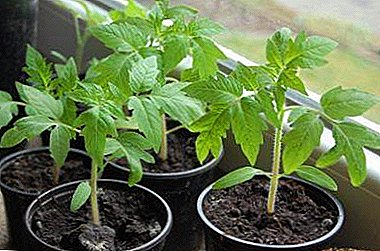 Seedlings grown at home must be “hardened”: for some time (up to 15–20 days) containers are taken out onto the street, where they remain for a certain time (from 2 hours to 10 hours daily). The minimum period of hardening is 3 days, but it is better to allocate this stage more time: it only has a beneficial effect on the adaptive abilities of young plants.
Seedlings grown at home must be “hardened”: for some time (up to 15–20 days) containers are taken out onto the street, where they remain for a certain time (from 2 hours to 10 hours daily). The minimum period of hardening is 3 days, but it is better to allocate this stage more time: it only has a beneficial effect on the adaptive abilities of young plants.- 10 days before transplanting in open ground, watering should be reduced, and within a week it should stop altogether.
- But on the eve of the landing day, young saplings are poured abundantly with water.
Seeds
- Before sowing seeds into the soil, they must also be processed: the seeds are placed in a fabric bag and immersed for 15–20 minutes in a solution of potassium permanganate (1 g of manganese per 1 tbsp. Of water), then washed with running water.
- The next step - they should be soaked for 12 hours in a nutrient solution (1 tsp. Of nitroammofoski (nitrophoska) per 1 liter of water).
- Then for 24 hours - to clean water.
- After 1 - 2 days, the tissue bag is sent to the fridge (+ 1C- + 2C), where it is necessary to irrigate them from time to time in order to avoid drying out.
What to put from organic?
Consider that it is best to put in the hole when growing tomatoes from organic fertilizers, something that is always at hand, from proven folk remedies.
Important! Three vital minerals for the normal development of tomatoes and the future of high fruiting - nitrogen, phosphorus, potassium.
- Nitrogen necessary for the plant during its active growth, the lack of this element affects the formation of lateral shoots, their strength and color of leaves.
- Phosphorus accelerates the development of the fetus, stimulates increased fruiting, promotes active growth of the root system of the plant.
- Potassium also affects the development and number of fruits, their quality.
Manure
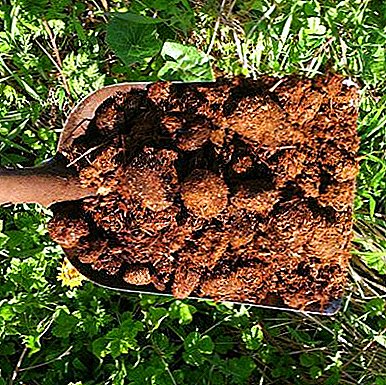 Manure is a natural fertilizer, which is a source of such microelements as nitrogen, phosphorus, potassium, magnesium, sulfur, chlorine, silicon, which are necessary for the full development of tomatoes. Due to manure a fertile soil layer is formed., it becomes loose, nutritious, decreases the level of acidity. There is no fundamental difference in the chemical compositions of manure of various animals. The plant will be useful for any of them.
Manure is a natural fertilizer, which is a source of such microelements as nitrogen, phosphorus, potassium, magnesium, sulfur, chlorine, silicon, which are necessary for the full development of tomatoes. Due to manure a fertile soil layer is formed., it becomes loose, nutritious, decreases the level of acidity. There is no fundamental difference in the chemical compositions of manure of various animals. The plant will be useful for any of them.
Usually, the manure is collected in a certain place where it overheats, covered with plastic wrap. In the fall, it is scattered around the household plot (8 kg of mullein per 1 square meter), and in the spring it is brought directly into the wells before planting.
Into the hole dug under the tomatoes (about 50 cm deep), rotted manure is introduced (250-500 g), then a layer of earth, and only then, after 2 - 3 days, seedlings are planted.
The use of fresh manure in the spring is not recommended because of its increased "aggressiveness"able to burn the root system of plants! For the same reason, contact of roots and manure should not be allowed in the hole.
Compost
Compost is an organic fertilizer obtained from the decomposition of organic substances under the influence of microorganisms. Compost helps the soil to restore vitality, improves its structure, improves its fertile qualities. This effect can be achieved due to the fact that it includes such chemical elements as nitrogen, phosphorus, potassium and carbon released during the process of decay.
Categorically it is impossible to put in compost:
 diseased plants;
diseased plants;- weeds;
- heat-treated vegetables;
- fruits;
- eggs;
- bones;
- citrus peel;
- feces of humans and cats, dogs.
When the compost becomes crumbly, slightly wet and in appearance it will resemble the forest ground, it can be added to the planting holes (200 g per 1 plant), mixing with the soil.
Onion Husk
The onion peel, which is familiar to everyone, is often simply discarded in the culinary process. In fact, this is a unique substance, the chemical composition of which includes:
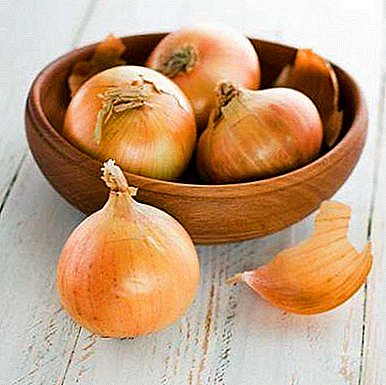 vitamin E;
vitamin E;- group B;
- nicotinic and ascorbic acids;
- phytoncides;
- flavonoids;
- fructans;
- kerotina, etc.
Most of these substances have antiseptic properties, but at the same time it favors the reproduction of beneficial microflora. therefore experienced gardeners do not dispose of onion peel, but add it in ground form to the wells (based on a handful of husks under 1 plant). This fertilizer is thoroughly mixed with the ground before pouring into the hole.
Wood ash
Wood ash is a miracle substance containing a large number of essential elements for the growth and fruiting of tomatoes:
 calcium;
calcium;- potassium;
- magnesium;
- iron;
- phosphorus and others.
Ash not only provides the soil with essential nutrients, but is also an excellent means of protecting the soil and plants from many diseases and pests.
Ash can be applied directly to the well before planting seedlings (100 g of dry matter per plant). The earth dug out from a landing hole, mix with fertilizer and the received plant fall asleep a planted plant.
Important! Ash should be the product of burning plant residues!
Yeast
Yeast is an environmentally friendly, unique product, containing in its composition a large amount of vitamins and minerals:
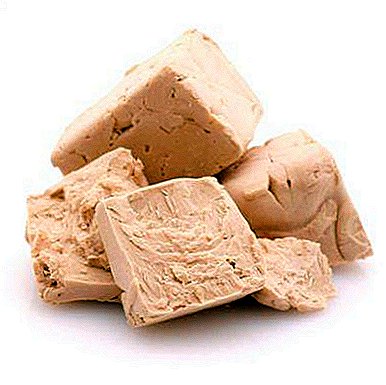 nitrogen;
nitrogen;- potassium;
- phosphoric acid;
- iron.
They contribute to the provision of nutrients to the soil, contribute to the accelerated adaptation of tomatoes, their enhanced root formation, increase plant immunity.
When planting tomatoes, a positive effect will give a preliminary spillage in the wells (for 1 day) of the yeast solution. (20 g per 1 bucket of warm water, infused for 1 day). Up to 220 g of this liquid can be poured into each seat.
What need to make mineral fertilizers?
Mineral fertilizers are applied when planting a tomato only if organic for some reason could not be applied.
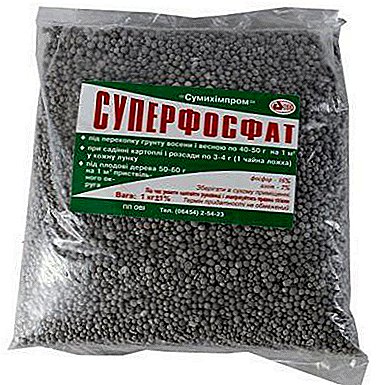 Superphosphate - mineral phosphate fertilizer containing other useful trace elements: magnesium, calcium and others.
Superphosphate - mineral phosphate fertilizer containing other useful trace elements: magnesium, calcium and others.The application of this fertilizer will increase the yield of tomatoes, improve their quality characteristics, improve the development of the root system of seedlings, and prevent many diseases.
The required dosage is 10-15 g (1 tbsp. Granules per planting hole).
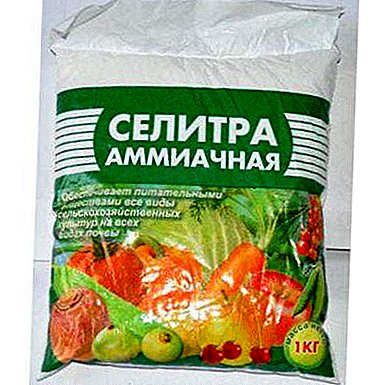 Ammonium nitrate - mineral fertilizer, the predominant element in which is nitrogen.
Ammonium nitrate - mineral fertilizer, the predominant element in which is nitrogen.This element is responsible for a set of green mass and plant growth.
Enough in the hole to fill 1 tbsp. granules. Another option: 30 g of the drug dissolved in 10 liters of water and shed in the planting hole a day before planting tomatoes.
What is necessary to add complex fertilizers?
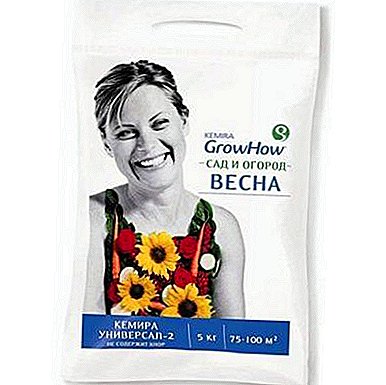 "Kemira Universal" developed in Finland and licensed manufactured in Russia. The complex includes all the necessary nutrients and trace elements (nitrogen, phosphorus, potassium, selenium, boron, magnesium, manganese, zinc, and others), which do not allow the soil to deplete. Each package of fertilizer is supplied with detailed instructions on the dosage of the drug, but most often about 0.5 - 1 tbsp is added directly to the well. pellets, which are necessarily pritrushivayutsya earth, and only then is the planting of seedlings.
"Kemira Universal" developed in Finland and licensed manufactured in Russia. The complex includes all the necessary nutrients and trace elements (nitrogen, phosphorus, potassium, selenium, boron, magnesium, manganese, zinc, and others), which do not allow the soil to deplete. Each package of fertilizer is supplied with detailed instructions on the dosage of the drug, but most often about 0.5 - 1 tbsp is added directly to the well. pellets, which are necessarily pritrushivayutsya earth, and only then is the planting of seedlings.This drug can be purchased at a price of 100-120 rubles per 100 g of the drug.
 Often experienced gardeners purchase complex fertilizers from the Universal series, containing in its composition various micro- and macroelements (the main dose of nitrogen, phosphorus and potassium), which act to strengthen plants, increase their resistance to adverse weather conditions, and accelerate the flowering and fruiting processes. Granules are introduced directly into the well at the rate of 20 g per plant. Contact of the roots with fertilizer is undesirable.
Often experienced gardeners purchase complex fertilizers from the Universal series, containing in its composition various micro- and macroelements (the main dose of nitrogen, phosphorus and potassium), which act to strengthen plants, increase their resistance to adverse weather conditions, and accelerate the flowering and fruiting processes. Granules are introduced directly into the well at the rate of 20 g per plant. Contact of the roots with fertilizer is undesirable.Estimated price - 450 - 500 rubles per package (5 kg).
No wonder they say that the most delicious tomatoes are those that are grown with their own hands. To help to collect an excellent harvest can be a variety of top dressing, made previously in the ground, during planting or as plants grow. What to pour into the hole - it is only up to the vegetable grower.


 Seedlings grown at home must be “hardened”: for some time (up to 15–20 days) containers are taken out onto the street, where they remain for a certain time (from 2 hours to 10 hours daily). The minimum period of hardening is 3 days, but it is better to allocate this stage more time: it only has a beneficial effect on the adaptive abilities of young plants.
Seedlings grown at home must be “hardened”: for some time (up to 15–20 days) containers are taken out onto the street, where they remain for a certain time (from 2 hours to 10 hours daily). The minimum period of hardening is 3 days, but it is better to allocate this stage more time: it only has a beneficial effect on the adaptive abilities of young plants. diseased plants;
diseased plants; vitamin E;
vitamin E; calcium;
calcium; nitrogen;
nitrogen; Superphosphate - mineral phosphate fertilizer containing other useful trace elements: magnesium, calcium and others.
Superphosphate - mineral phosphate fertilizer containing other useful trace elements: magnesium, calcium and others. Ammonium nitrate - mineral fertilizer, the predominant element in which is nitrogen.
Ammonium nitrate - mineral fertilizer, the predominant element in which is nitrogen. "Kemira Universal" developed in Finland and licensed manufactured in Russia. The complex includes all the necessary nutrients and trace elements (nitrogen, phosphorus, potassium, selenium, boron, magnesium, manganese, zinc, and others), which do not allow the soil to deplete. Each package of fertilizer is supplied with detailed instructions on the dosage of the drug, but most often about 0.5 - 1 tbsp is added directly to the well. pellets, which are necessarily pritrushivayutsya earth, and only then is the planting of seedlings.
"Kemira Universal" developed in Finland and licensed manufactured in Russia. The complex includes all the necessary nutrients and trace elements (nitrogen, phosphorus, potassium, selenium, boron, magnesium, manganese, zinc, and others), which do not allow the soil to deplete. Each package of fertilizer is supplied with detailed instructions on the dosage of the drug, but most often about 0.5 - 1 tbsp is added directly to the well. pellets, which are necessarily pritrushivayutsya earth, and only then is the planting of seedlings. Often experienced gardeners purchase complex fertilizers from the Universal series, containing in its composition various micro- and macroelements (the main dose of nitrogen, phosphorus and potassium), which act to strengthen plants, increase their resistance to adverse weather conditions, and accelerate the flowering and fruiting processes. Granules are introduced directly into the well at the rate of 20 g per plant. Contact of the roots with fertilizer is undesirable.
Often experienced gardeners purchase complex fertilizers from the Universal series, containing in its composition various micro- and macroelements (the main dose of nitrogen, phosphorus and potassium), which act to strengthen plants, increase their resistance to adverse weather conditions, and accelerate the flowering and fruiting processes. Granules are introduced directly into the well at the rate of 20 g per plant. Contact of the roots with fertilizer is undesirable.